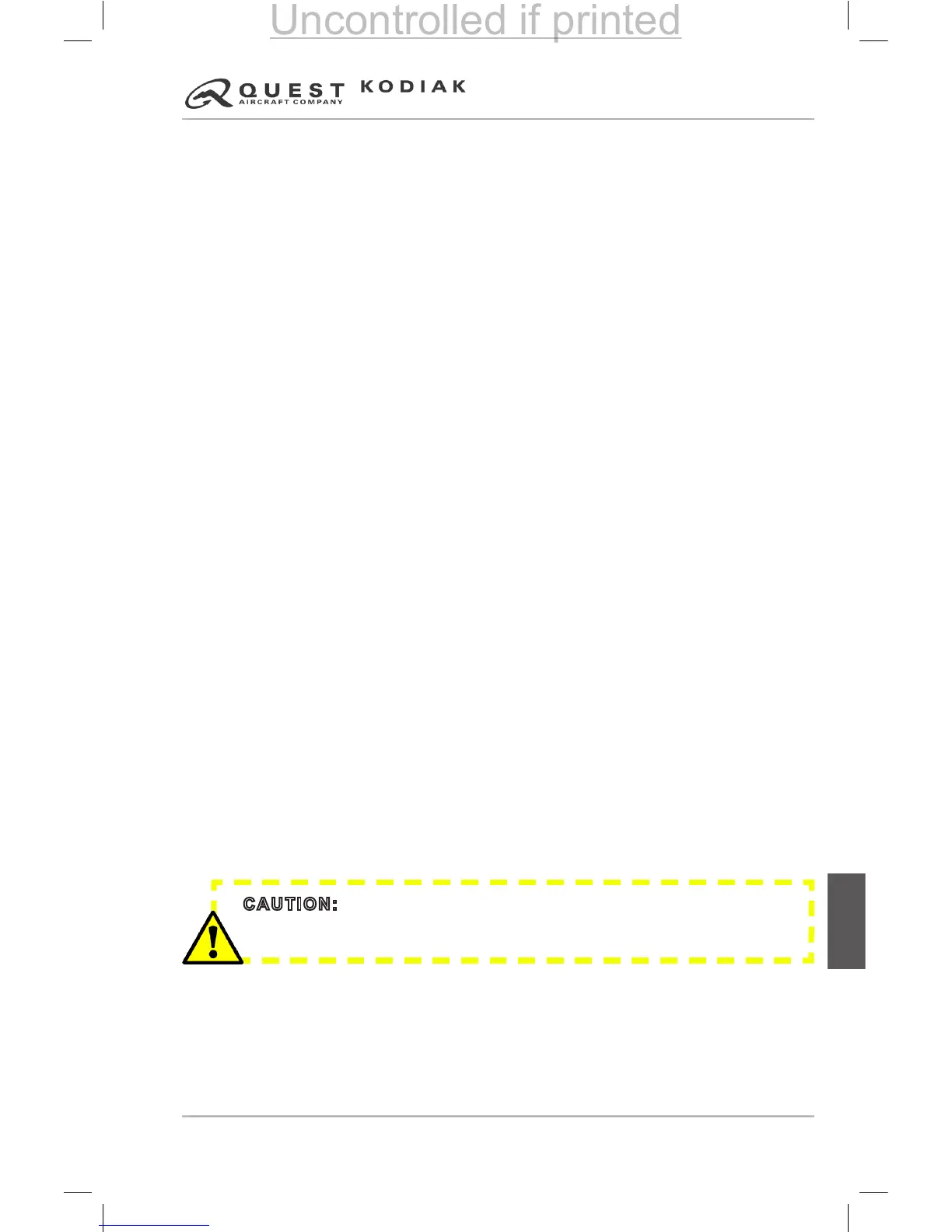driven propeller governor is mounted on an accessory mounting pad at the 12
o’clock position of the propeller reduction gearbox. The oil from the governor
is supplied to the propeller and hydraulic piston through a hollow engine/
propeller shaft. Increasing the volume of oil within the piston and cylinder
will decrease the blade angle and increase propeller RPM. By changing the
blade angle, the governor can maintain a constant RPM independent of where
the power lever is set and with variances in engine loads. The governor uses
engine speed-sensing mechanisms to determine if oil should be supplied or
drained, as necessary to maintain constant engine speed (RPM).
If governor supply oil is lost during operation, the propeller will increase pitch
to the feather position. Feathering occurs because the summation of internal
propeller forces causes the oil to drain out of the propeller until the feather
stop position is reached.
Normal in-ight feathering is accomplished when the pilot retards the propeller
control lever beyond the FEATHER tab. When this is accomplished the oil is
allowed to drain from the propeller and return to the engine sump. The engine
is normally shut down with the propeller in feather.
Normal in-ight unfeathering is accomplished by positioning the propeller
control lever forward of the FEATHER tab with the engine started. As engine
speed increases, the governor supplies oil pressure to the propeller, resulting
in a decrease in blade angle.
Reverse propeller pitch is available for decreasing ground roll during landing.
In the reverse mode of operation, the governor operates in an underspeed
condition to act strictly as a source of pressurized oil, without directly
controlling propeller RPM. Control of the propeller blade angle in reverse is
accomplished with the power lever, beta valve, beta ring and carbon block.
The propeller is reversed by manually positioning the power lever deep into
beta range, causing the beta valve to supply oil from the governor pump to
the propeller. Several external propeller mechanisms, including the beta ring
and carbon block assembly, communicate propeller blade angle position to
the beta valve.
When the propeller reaches its desired reverse position, movement of the
beta ring and carbon block assembly initiated by the propeller piston, causes
the beta valve to shut off the ow of oil to the propeller. Any additional
unwanted movement of the propeller toward reverse, or any forward
movement of the power lever to bring the propeller out of feather, will cause
the beta valve to drain oil from the propeller and increase pitch.
CAUTION: The propeller reversing linkage may be damaged if the
power lever is moved aft of the IDLE position when the propeller is in the
feathered position.
